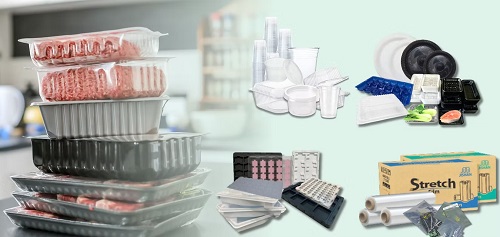Packaging waste gives people headaches. Customers hate unwrapping piles of plastic. Businesses hate paying for packaging that ends up in landfills. And governments? They worry about overflowing dumps and rising carbon footprints. This is where PCR Stretch Film enters the scene. Not just another packaging option, but a smarter way to wrap goods, protect shipments, and reduce guilt. Pair it with Void Fill, and you get a strong, eco-friendly combo that keeps both boxes and consciences safe.
Why PCR Stretch Film Matters in Malaysia?
Malaysia ships millions of parcels daily. From online shopping sprees to industrial deliveries, packaging is everywhere. Traditional films? They add convenience but pile up waste. PCR Stretch Film changes that story. PCR stands for “Post-Consumer Recycled.” That means the plastic isn’t fresh from fossil fuels. It’s reused material given a second life. Less waste, fewer emissions, and more responsible packaging. Simple math, really.
Malaysian companies are under pressure to balance costs with sustainability. Regulations keep tightening. Consumers are louder about green choices. Brands that adapt survive. Those that don’t? They drown in negative feedback. That’s why PCR Stretch Film isn’t just an option anymore—it’s becoming the default.
What Exactly is PCR Stretch Film?
It is a stretch-film consisting of recycled plastic. That’s the short version. But here’s why it matters. The movie is as strong, supple and elastic as virgin plastic. But it utilizes waste plastic that is gathered, refurbished and re-engineered.
Therefore, rather than disposing waste plastic bottles to landfills, manufacturers use them to make tough wrapping films. The result? Pallets remain stable, packages are not ripped and the planet takes a little breath.
In Malaysia’s hot, humid climate, packaging must endure rough journeys. PCR Stretch Film does the job while lowering environmental costs. Add Void Fill materials inside the box, and shipments stay protected against bumps and shakes.
The Pain Points It Solves
Ask any warehouse manager in Malaysia, and you’ll hear the same complaints:
- Packaging costs are climbing every year.
- Customers criticize plastic-heavy packaging.
- Waste disposal fees keep rising.
- Pallets collapse when cheap films break mid-transit.
PCR Stretch Film addresses each point. It reduces raw material reliance, cuts waste disposal guilt, and performs as well as traditional films. Pair it with Void Fill, and fragile goods survive even the longest routes from Klang Valley to Penang.
Read Also:- 7 Advantages of Paper Packaging for Malaysian Food & Beverage Brands
How PCR Stretch Film Enhances Sustainability
Sustainability isn’t just a fancy buzzword here. It’s survival. Businesses in Malaysia face stricter compliance standards. At the same time, customers post unboxing videos online. Nobody wants to go viral for wrong reasons.
PCR Stretch Film offers real benefits:
- Less virgin plastic production.
- Lower carbon footprint from packaging.
- Recycling loop that keeps waste out of landfills.
And when companies use Void Fill responsibly—like recycled paper or bio-based fillers—boxes don’t just ship safely, they ship smartly.
Better Corporate Image
Malaysian consumers pay attention to brand choices. Use green packaging, and you gain trust. Use wasteful packaging, and you lose fans fast. PCR Stretch Film signals responsibility without sacrificing performance.
Cost Efficiency
Admittedly, sustainable materials may be costly. Yet in the long run expenses are equalized. With recycling incentives and reduced waste penalties, PCR Stretch Film proves practical. Add Void Fill, and damaged returns drop sharply, saving even more.
Jishan Berhad and Market Growth
Local companies are stepping up. Jishan Berhad, for example, has worked to expand sustainable packaging solutions. Brands like these are showing Malaysia how to merge practicality with responsibility.
The demand isn’t slowing down. Logistics, food delivery, and retail giants are rethinking packaging. And guess what they’re reaching for? PCR Stretch Film and smarter Void Fill options.
The Humor in Packaging
You know what’s worse than unpacking a product wrapped like a mummy? Realizing the plastic can’t be recycled. Customers roll their eyes and complain online. No business wants that. With PCR Stretch Film, companies can avoid these awkward unboxing moments. It’s like sending a gift that doesn’t come with guilt.
PCR Stretch Film vs. Traditional Packaging
Traditional plastic film? It’s strong, but wasteful. Once it’s torn off, it’s trash. PCR Stretch Film? Strong, reliable, and kinder to the planet. Pair it with Void Fill, and the comparison becomes even clearer.
- Traditional film: Cheap upfront, costly long-term.
- PCR Stretch Film: Slightly higher upfront, but saves costs and reputation later.
- Void Fill: Completes the package by preventing product damage.
Key Points
- PCR Stretch Film is made from recycled plastic.
- It minimizes plastic waste, yet does not weaken packaging.
- Paired with Void Fill, it protects fragile shipments.
- It is cost-effective, performance-wise and sustainable.
- It is becoming a necessity in logistics and retailing ventures in Malaysia.
- Brands like Jishan Berhad are showing the way forward.
Conclusion
Packaging is no longer just about wrapping things up. It’s about wrapping them responsibly. PCR Stretch Film makes that possible in Malaysia without forcing businesses to compromise on performance. Combine it with Void Fill, and you get packaging that’s protective, eco-friendly, and future-ready.
So, next time you receive a parcel that feels solid, looks neat, and doesn’t make you groan about plastic waste—you just might be holding the future of packaging.
FAQs
Is PCR Stretch Film as strong as traditional stretch film?
Yes. PCR Stretch Film offers the same strength and flexibility while using recycled materials.
Can PCR Stretch Film be recycled again after use?
Yes. Most PCR Stretch Film can be collected and recycled into new packaging.
Why use Void Fill with PCR Stretch Film?
Void Fill protects products inside the box while the stretch film secures them outside. Together, they reduce damages and waste.
